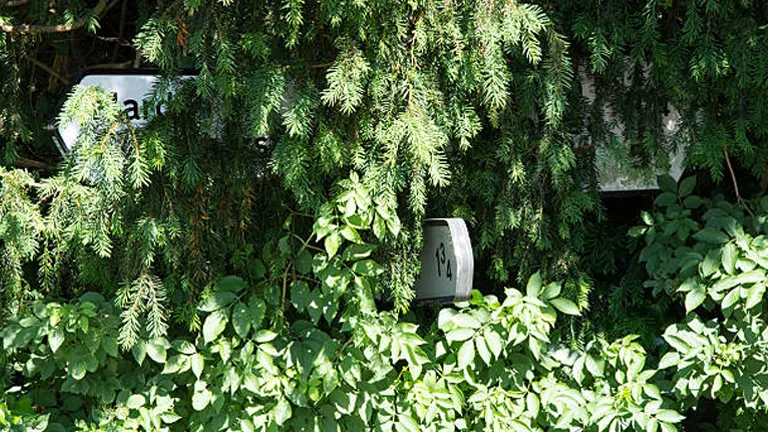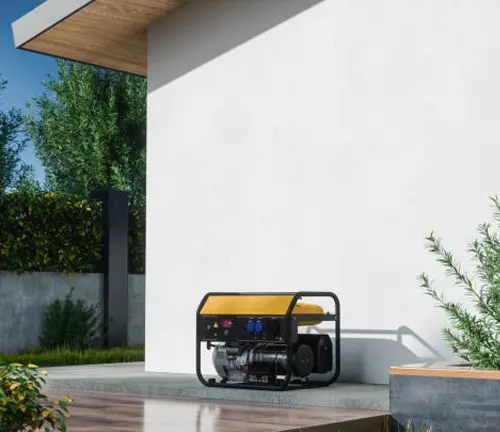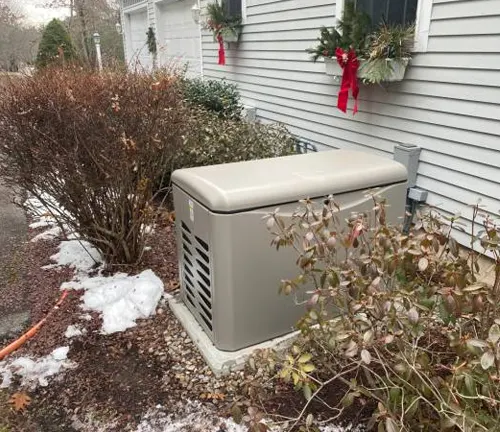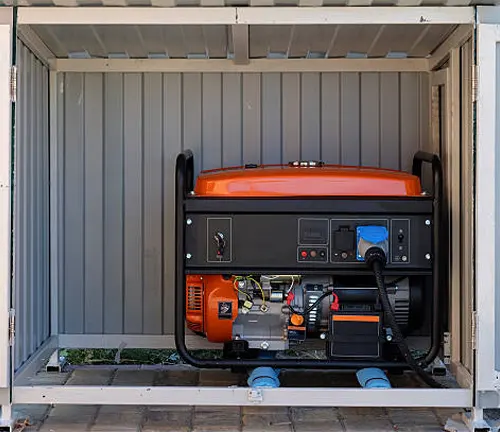How to Hide a Generator with Landscaping: Top Tips for a Seamless Look
- October 1, 2024
- 0 comment
Generators are essential for many homeowners, especially in areas prone to power outages or extreme weather. However, while they provide peace of mind, generators can be an eyesore in an otherwise beautiful landscape. So, how can you keep your generator accessible while ensuring it doesn’t disrupt your garden’s aesthetic?

In this guide, we’ll explore effective ways to hide your generator using landscaping techniques. By considering factors like functionality, ventilation, and safety, you can create a seamless look without sacrificing practicality.
What Is Generator Concealment with Landscaping?
Hiding a generator with landscaping involves strategically using plants, structures, and other elements to cover or disguise the equipment. The goal is to maintain easy access to the generator for maintenance and operation while ensuring it blends with the surrounding environment.
- Ventilation: Generators require adequate airflow to prevent overheating, so any concealment must allow for proper ventilation.
- Accessibility: Regular maintenance and potential emergency use require easy access to the generator. Your landscaping shouldn’t hinder opening panels or refueling.
- Noise Reduction: Some landscaping features can help reduce the noise generated by the equipment, improving the overall experience.
Factors to Consider When Hiding a Generator with Landscaping
Several factors impact how well your landscaping can hide a generator while maintaining function and safety. Let’s break down the most important considerations:
1. Size and Location of the Generator
The size of your generator and its location in your yard will significantly affect how you can conceal it. A larger generator requires more space and, potentially, more extensive coverage, while a small, portable generator might only need minimal landscaping.
For example, if your generator is installed next to the house, you might use bushes or lattice screens to shield it from view. If it’s further out in the yard, you may want to create a dedicated enclosure that blends into the garden.

2. Ventilation and Safety
Generators need proper ventilation to function safely. Any landscaping around your generator should ensure that air can circulate freely to avoid overheating. Placing plants or structures too close to the equipment can block airflow and pose a fire risk.
For example, shrubs should be planted a few feet away from the generator, allowing air to flow around the equipment. You can also use open lattice panels or slatted wooden screens that maintain airflow while providing visual coverage.
3. Noise Reduction
Generators can be noisy, and landscaping can help reduce this sound. Strategic placement of hedges, trees, or even sound-absorbing fencing materials can minimize the noise that reaches your living spaces.
For example, tall hedges like evergreen trees can act as natural sound barriers while providing coverage. If noise is a significant issue, consider adding a soundproof enclosure designed for generators, surrounded by plants for a more natural look.
4. Accessibility
It’s vital to keep your generator accessible for maintenance or emergencies. Any landscaping features should allow easy access to the generator’s panels and fuel tank. Gates, removable panels, or plants that can be easily trimmed back can ensure that the generator remains accessible without sacrificing aesthetics.
Types of Landscaping for Generator Concealment
Different types of landscaping can be used to hide your generator, each offering unique advantages. Let’s explore some options and how they impact the overall look:
1. Plants and Shrubs
Using plants is one of the most natural ways to hide a generator.
Dense, tall shrubs like boxwood or juniper can create a hedge around the generator, shielding it from view while keeping the look natural. For smaller generators, compact plants like ornamental grasses or dwarf evergreens can provide enough coverage without overwhelming the area.

2. Lattice Screens or Fences
If you prefer a more structured look, lattice screens or fencing can effectively hide a generator. Wooden or vinyl lattice panels allow airflow while providing solid coverage. You can also attach climbing plants, like ivy or jasmine, to the lattice for added greenery.
Impact: Lattice screens provide a clean, organized look and are ideal for those who want a low-maintenance option. However, they may require occasional painting or repairs.
3. Stone or Brick Enclosures
For a more permanent solution, consider building a small enclosure using stone, brick, or concrete.
These materials offer a durable, long-lasting option and can be designed to match other structures on your property, such as your home’s exterior or patio.

Impact: Stone or brick enclosures provide a solid, durable covering that can also help with noise reduction. However, they are more expensive to install and may require permits.
Practical Tips for Hiding Your Generator
Once you’ve chosen your method, there are several additional considerations to keep in mind to ensure both function and aesthetics:
- Consider Plant Growth: When using plants, make sure to choose species that won’t overgrow or become too dense. Regular pruning will be necessary to maintain airflow and accessibility.
- Plan for Future Maintenance: Always leave enough space to perform generator maintenance or replacements. Removable panels or open gates will allow technicians to access the generator when needed.
- Blend with Existing Landscaping: Use plants and materials that match the rest of your landscape to ensure a cohesive look. For instance, if your garden has a natural feel, consider soft greenery instead of harsh, industrial materials.
- Include Decorative Elements: Adding decorative features like planters, outdoor lighting, or garden art can help draw attention away from the generator. These elements can also enhance the overall appeal of your yard.
Summary and Actionable Advice
Hiding a generator with landscaping doesn’t have to be a difficult task. By carefully selecting plants, screens, or enclosures, you can seamlessly blend the generator into your landscape while maintaining safety and accessibility. Keep in mind essential factors like ventilation, size, and noise reduction to ensure your generator works efficiently and remains out of sight.
To get started:
- Measure the space around your generator.
- Choose a landscaping solution that fits your yard and budget.
- Consider long-term maintenance and access needs.
- Blend your solution with your existing garden for a cohesive look.
With thoughtful planning, you can enjoy the benefits of a generator without sacrificing your yard’s aesthetic appeal.
Frequently Asked Questions (FAQ’s)
- Can I completely cover my generator with plants?
No, generators need proper ventilation. Leave space around plants for airflow. - What type of plants work best to hide a generator?
Dense, low-maintenance shrubs like boxwood, juniper, or ornamental grasses. - Can I use a fence to hide my generator?
Yes, a lattice fence or screen allows airflow and provides solid coverage. - How close can I plant shrubs to my generator?
Maintain a minimum of 2-3 feet between the generator and plants for safety. - Will hiding a generator with landscaping reduce noise?
Yes, tall hedges or sound-absorbing materials can help reduce noise levels. - Can I build a permanent enclosure around my generator?
Yes, stone or brick enclosures work well but must allow proper ventilation. - Do I need permits to build a structure around my generator?
Depending on your local regulations, permits may be required for enclosures. - What should I avoid when landscaping around a generator?
Avoid using dense, flammable plants or blocking access for maintenance. - Can climbing plants be used on lattice screens?
Yes, climbing plants like ivy or jasmine are great for adding greenery to screens. - How can I blend the generator concealment with my existing landscape?
Use similar plants, materials, and decorative elements to create a cohesive look.

Charles Hayes
Forestry AuthorI'm Charles Hayes, I bring over 15 years of specialized expertise in landscaping and woodworking, blending artistic design with sustainable environmental stewardship. My career, fueled by a profound passion for the natural world, encompasses extensive education and hands-on experience in creating harmonious, eco-friendly outdoor spaces and responsibly managing forest resources. Recognized for my professional standing, I am committed to continuous learning and certification in cutting-edge practices. My expertise is not only reflected in my work but also in my contributions to community projects, educational workshops, and collaborations with industry leaders. As an authoritative voice in my field, I strive to share knowledge and promote environmentally conscious approaches, making me a trusted resource in landscaping and forestry.













Leave your comment